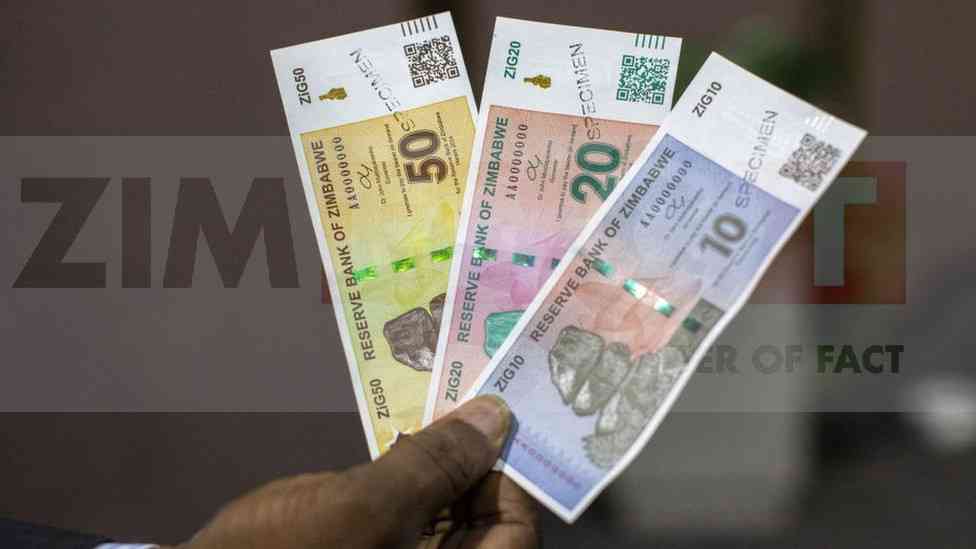
Zimbabwe’s inflation saga continues to be a compelling narrative of economic twists and turns. The recent data for November 2024, published by the Zimbabwe National Statistics Agency (ZimStat), unveils both a tumultuous past and an uncertain future, coloured by the volatile dynamics of the Zimbabwe Gold (ZiG) currency and the United States dollar.
In November 2024, the ZiG monthly inflation rate settled at 11,7%, a marked improvement from the staggering 37,2% in October 2024. However, it is imperative to note that the drastic spike in October was primarily due to the abrupt devaluation of the ZiG by 43% on 27 September 2024. This devaluation, meant to correct market imbalances between the parallel and interbank market, saw the ZiG plummet from ZiG14 per US dollar to ZiG24,39 per US dollar, causing a sharp surge in prices.
The initial hope was that aligning the official rate, which stood at ZiG37 at that time, would ease inflation, but the reality has been more complex.
The devaluation did lower the exchange rate premium, which theoretically should curb inflation by reducing the forward pricing behaviour among businesses. However, uncertainties in the market and ongoing manipulation of the interbank rate have spurred speculative trading and continued forward pricing, albeit at a slower pace.
These factors have kept inflationary pressures alive, revealing the intricate interplay between currency policies and market behaviours.
To put this in perspective, let’s look back a few months.
In September 2024, the US dollar annual inflation was 4,2%, up from 3,7% in August, while the monthly inflation rate was 0,7%, up by 0,5 percentage points from August.
Concurrently, the ZWG monthly inflation rate surged by 5,8%, a significant jump reflecting the economic instability.
- Awards target married couples
- Awards target married couples
- Sibanda living his writing dream
- Pomona deal under spotlight as experts meet
Keep Reading
By November 2024, the USD annual inflation had eased to 3,3%, and the monthly rate dropped to 0,1%.
This contrast between the stabilisation in USD inflation and the volatility in ZiG inflation highlights the dual-currency economy’s challenges.
Zimbabwe’s history of hyperinflation and currency instability has created a landscape where the US dollar serves as a more stable store of value. Retailers, mandated to use the official exchange rate, often price goods in US dollars, translating these prices to ZiG. This practice helps them hedge against local currency’s volatility. For instance, if the official rate is ZiG14 per US dollar and the parallel rate is ZiG26, an item traditionally priced at US$1 would need to be sold at approximately US$1,85 to cover the exchange premium.
This results in elevated ZiG prices, driving inflation.
To understand the impact of these dynamics, consider the following: formal retailers must ensure liquidity in foreign currency to meet import obligations. This necessitates pricing strategies that hedge against exchange losses.
Therefore, US dollar prices are inflated to account for potential ZiG devaluation, indirectly influencing both ZiG and US dollar inflation rates.
Therefore, a slow-down in US dollar inflation reflects easing arbitrage activities, and forward-pricing behaviour.
In reducing US dollar inflation, aligning the official exchange rate with market realities and ensuring timely foreign currency supply through the interbank market are crucial steps.
Failure to implement such measures risks further increasing inflation, pushing more activity into the informal sector where price regulations are lax.
Consumer behaviour also plays a crucial role.
As the ZiG depreciates, consumers shift towards holding and spending US dollars, anticipating further currency declines. This behaviour allows retailers to raise US dollar prices without significantly impacting sales, contributing to the inflationary cycle.
In the short-term, inflation is expected to remain high as speculative trading and forward pricing continue. Effective monetary and fiscal policies could stabilise inflation in the medium term.
Strengthening the ZiG, improving economic fundamentals, and reducing dependence on the parallel market could mitigate inflationary pressures.
Long-term stability will require structural reforms, including economic diversification and improved governance, to create a resilient economy less vulnerable to inflationary shocks.
Quantitative analysis shows that if the current monthly inflation rate of 11,7% continues, annual inflation could exceed 213,84%.
Even with moderate intervention, an average monthly inflation rate of 5% would result in an annual rate of 79,59%.
These projections underscore the urgency for robust and sustained policies to stabilise the economy.
Duma is a financial analyst and accountant at Equity Axis, a leading media and financial research firm in Zimbabwe. — [email protected] or [email protected], Twitter: TWDuma_











